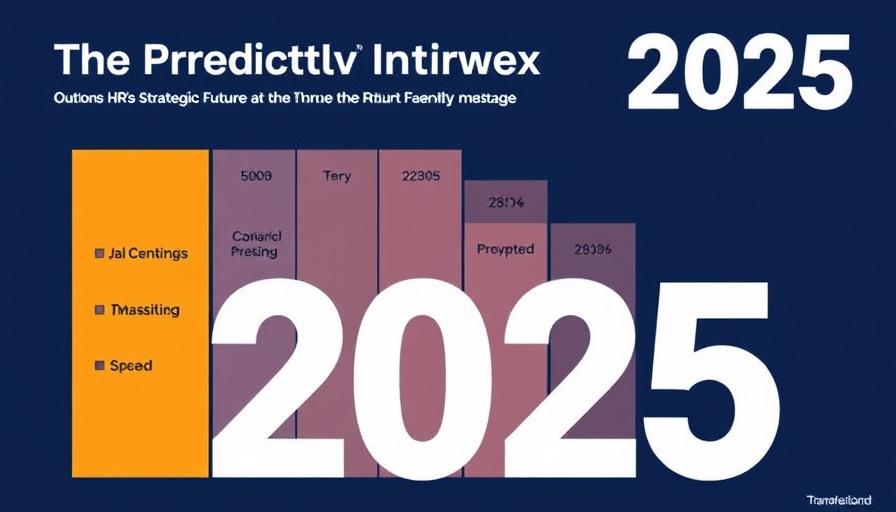
Transform 2025: Forecasting the Future of HR
The Transform 2025 conference, taking place in Las Vegas from March 17-19, promises to be a significant event for HR professionals as they grapple with the rapidly changing landscape of work. As innovation and technology continue to drive transformation, events like these are essential for equipping human resources leaders with the tools needed to adapt and thrive. With over 3,500 industry professionals expected, the conference will be a melting pot of ideas focused on the future of workforce strategies.
Understanding the Evolving Role of AI in HR
An increasingly central topic of discussion is the role of artificial intelligence (AI) in the workplace. The Institute for Corporate Productivity (i4cp) highlights that organizations embracing AI technologies are experiencing better financial outcomes compared to those lagging behind. For instance, companies that integrate AI into their workflows report significant gains in revenue growth and customer satisfaction. This trend towards automation means that HR departments must transition from traditional practices to data-driven decision-making powered by AI.
Shifting From Job Titles to Skill Sets
A parallel shift is taking place in hiring practices, with a movement towards a skills-first approach. Rather than focusing solely on job titles, organizations are evaluating candidates based on their skills and potential contributions. This adaptation not only appeals to a diverse workforce but also aids in fostering growth and internal mobility among employees. As organizations refine their strategies, internal talent marketplaces may become as ubiquitous as job boards, allowing for more versatile team formations.
The Importance of Leadership Development Programs
Leadership development is another key theme for HR in 2025. Many organizations are realizing the importance of cultivating leaders who can navigate the complexities of modern workplaces. Ongoing training that prioritizes emotional intelligence, adaptive leadership, and conflict resolution will empower leaders to guide their teams through the inevitable uncertainties ahead. Initiatives such as mentorship programs or tailored workshops can prepare existing and emerging leaders for success.
Workplace Mental Health as a Pillar of HR Strategy
Prioritizing mental health and well-being is becoming an imperative for organizations aiming to retain talent in a competitive job market. As highlighted by experts, addressing employee well-being is now recognized as a core strategy rather than a supplementary concern. Providing comprehensive well-being programs that focus on mental health, financial wellness, and stress management can enhance employee satisfaction, productivity, and overall organizational performance.
Adapting to Demographic Shifts in the Workforce
As the workforce demographics shift rapidly, HR must be nimble in its approach to hiring and retaining diverse talent. By 2025, a significant portion of the workforce will be composed of older workers who bring valuable experiences and skills to the table. Companies must evolve to counter age-related biases and re-evaluate their retirement and benefits packages to tap into this emerging talent pool. Creating inclusive environments will be critical in fostering collaboration and innovation across age groups.
Preparing for Legislative Changes and DEI Challenges
Lastly, 2025 will likely usher in new challenges related to diversity, equity, and inclusion (DEI) initiatives. As external pressures mount, HR leaders must prepare to navigate potential backlash while also advocating for a culture of inclusion and belonging. Being informed about legislative changes affecting workplace demographics will keep HR professionals proactive instead of reactive.
Call to Action: Engage with the Future of HR Today
For HR professionals, it is essential to stay ahead of these trends and embrace the opportunities they bring. Attend events like Transform 2025 to connect with thought leaders and explore forward-thinking strategies. Engaging in conversations about artificial intelligence, leadership development, and mental health will position you and your organization at the forefront of the evolving human resources landscape.
 Add Row
Add Row  Add
Add 




Write A Comment